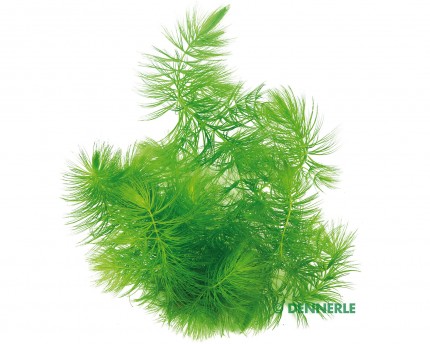incl. VAT plus shipping costs
Immediate delivery, express possible ![]()
More than 20 Articles in stock
Delivery only innh. Germany and Austria possible.
Switch to the German store
-10% EXTRA-RABATT
auf Deinen gesamten Warenkorb!!
- Item no: 11199
Fast delivery times
All products are in stock with us!14 years of breeding experience
Let our team of experts advise you!High customer satisfaction
from over 3,000 reviews "| Water values: | soft to medium hard |
| Difficulty: | 2 - Normal |
| Temperature: | 22-25 °C |
| Feature: | interesting brood care |
| with fish?: | Yes, with peaceful fish |
| Fish group: | Cichlids |
| Visual effect: | Forms territories (when spawning) |
| Diet: | carnivore - meat eater |
| Breeding: | medium |
| Planting possible?: | Yes |
| Origin: | South America |
| Final size: | 4-8 cm |
| Behavior: | Normal |
| with large crabs?: | No |
| with snails/shells?: | conditional* (see description) |
| with dwarf crabs?: | No |
| with shrimps?: | Socialization not possible |
| Pelvic region: | Center |
| Aquarium size: | 200 l (approx. 100cm) |
| with crabs?: | No |
With its colorful appearance, the three-striped dwarf cichlid is a popular candidate among South America fans. Also known as Apistogramma trifasciatus, this aquarium fish belongs to the cichlid family. Originally from the South American Rio Guaporé, it can also be found in the Rio Paraguay. This neat little perch is great for a great South American tank and is also a passable choice for beginners.
As usual for dwarf cichlids, the Apistogramma trifasciatus has the slight high back and flat sides. It reaches a final size of about 6 centimeters. Typical for him are the transverse stripes on the back and the tricolor fins. Dorsal and anal fins are dabeo nicely colored yellow, red and turquoise. The pelvic fins are transparent yellow and show white tips. The rather paler females have a round caudal fin, a black shoulder spot and are quite easy to distinguish from the males, as the latter develop turquoise green sides among other colors. In spawning mood, however, the "gray mice" turn bright yellow. Also in the face turquoise spots can be found in the male sporadically. During the mating season it intensifies its colors. The three-striped dwarf cichlid should be kept in a harem if possible.
Breeding of Apistogramma trifasciatus is possible in the aquarium, they are cave spawners. The animals should be offered many caves such as terracotta pots or coconut caves, but also stone structures secured against falling over. To promote the spawning readiness, but also the well-being, a dark ground is well suited as substrate. The female spawns preferably at the cave ceiling, she also takes over the later brood care, while the male guards the territory and can become very territorial. To prevent spawning fungus, the aquarium water should have an acidic pH of about 5 and an increased oxygen supply. With infusoria, slipper animals and later also freshly hatched Artemia nauplii the young can be raised without problems.
If possible, the aquarium for the three-striped dwarf cichlid should be 100 cm long . A good underwater structure should be created on a dark substrate. The dwarf cichlids use this as a territory marker, but also as a privacy screen and even more as a retreat. With decorations like clay pots, caves, stones and roots as we have them in our store this can be realized well. Perch-resistant perching plants such as Anubias also provide the necessary vegetation in the aquarium. The dwarfs prefer very acidic water in the aquarium with a pH between 5-6.5 and a total hardness of 0-5 °dGH. Liquid humic preparations, but also alder cones or sea almond bark, which also support the mucous membrane, are recommended, and these also have an antibacterial effect. At a temperature between 24 and 30 °C it is well kept.
With other South Americans it can be socialized very well. First of all with Loricariids but also with Corydoras. Also suitable are Striped pike or also the Red Neon and others Tetras. Dwarf shrimps regard the three-striped dwarf cichlid, however, rather as a menu diversion, which is why they are rather not suitable for socialization. Also crayfish belong better not in its neighborhood.
As a pure carnivore, it can be fed wonderfully with commercial dry food or flake food for carnivorous fish in the aquarium. Also peppers live food or Frozen food such as Artemia and Cyclops, but also Enchyträen his menu, so that he can be spoiled now and then.
Our food recommendation: NatureHolic Cichfeed is a great staple food for all carnivorous cichlids in the aquarium, perfectly meeting their requirements for food composition. The tasty pearls are also very well eaten by larger cichlids. Thanks to their soft texture, NatureHolic Cichfeed food pearls are gentle on the mouth and can be eaten very well by the fish.
Our plant recommendation: Use for planting NatureHolic InVitros. These are free of snails, planarians and other unwanted co-inhabitants. Also free of algae spores, bacteria and fungi.
Expert Tip: We recommend for fish keeping the NatureHolic 3 Phase Liquid. The care set offers the best all-round protection for your animals. It ensures optimal conditions for successful breeding and keeping.
| Scientific name: | Apistogramma trifasciatus |
| German Name: | Three-striped dwarf cichlid |
| Difficulty level: | for beginners |
| Origin/Distribution: | South America |
| Coloration: | light base color with cross bands, males with turquoise scales and spots on face, females bright yellow and with black spot on center of body during mating season |
| Age expectancy | approx. 4 years |
| Water parameters: | GH 2-5 °dGH, pH 4.5-5.5, temperature 24-29 °C |
| Tank size: | from 100 cm |
| Food | Granules, flakes, live and frozen food, Natureholic Cichfeed |
| Breeding | medium |
| Behavior | peaceful and occasionally aggressive towards conspecifics |
| Group size | 2 and up |
| Further information | Ten typical aquarium fish for beginners and alternatives to them, Tips for acclimating fish to the aquarium, Feeding aquarium fish properly - cheap food and what it can do |
- Item no: 11199
Entdecke die Garnelio Welt!
Garnelio gehört zu den größten Onlineshops für wirbellose Aquarientiere weltweit.
Viele Artikel gibt es exklusiv nur bei uns im Shop.



















The fields marked with * are required.
I have taken note of the privacy policy.